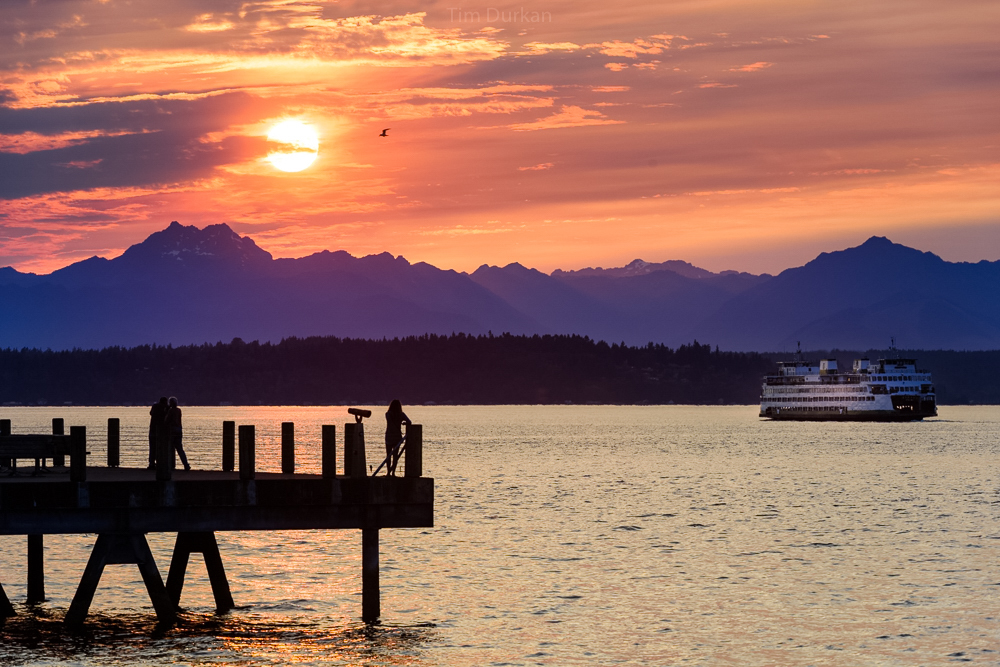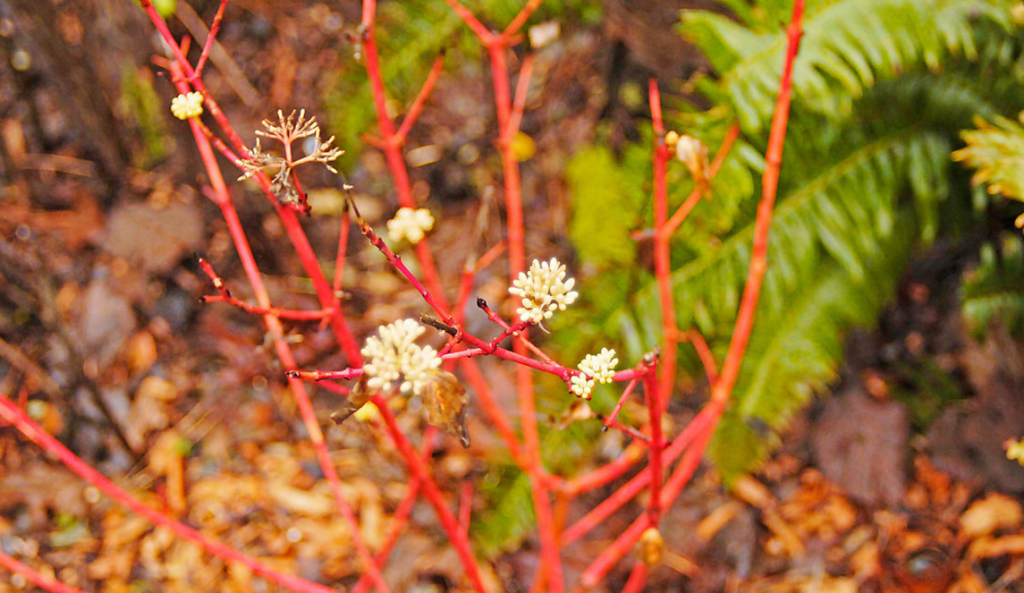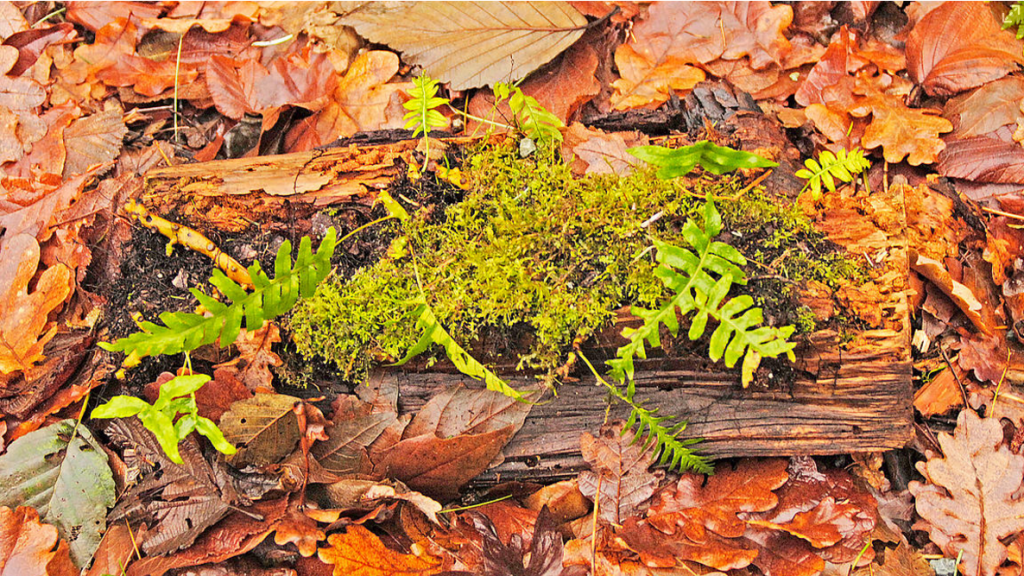

Carkeek Park demonstration garden photo courtesy of Terri Johnson, owner of Plumb Pixel Photography
Written by Deborah Phare, Carkeek Park Steward
Between the closed-fist grip of deep winter and the gentle touch of early spring resides another, much shorter, season. Gardeners are familiar with this brief time of year and respond to its arrival with hope and joy. Its duration is brief – sometimes just three weeks – but its days are filled with the soft green shoots and emerging buds of early perennials and shrubs poking through a mist of soft fog or the crumble-top layer of tired mulch.
In the demonstration gardens at Carkeek Park, few plants are in bloom during this time of year but the gardens’ gifts are on full display. The garden has a large selection of Hellebores and Heucheras, as do most gardens, but above and beyond those important plants there is a full palette of subtle colors and interesting shapes best seen during this short season.
The small, bright yellow buds of Mahonia aquifolium sparkle against shiny, deep green leaves. When planted in mass, Oregon Grape is a shot of sunlight on a dark winter day. Lucky visitors find delight in the nascent, cheery white pedals of Hepatica acutiloba nestled in our shady woodland bed. Trillium ovatum, Coast or Pacific Trillium, shows the beginnings of a flower tucked inside its protective leaf-coat. Most of the trillium flowers are white, although there are a few deep maroon blooms.
The tiny, round pink buds of Kalmiopsis leachiana “Umpqua Form” compliment the round, compact form of the plant. Some visitors who bend down to inspect this tidy little plant at close range are impressed by the many buds they see, and make a note to return in spring to see the plant in full bloom. They are never disappointed.
Viburnum tinus, Spring Bouquet, offers two rewards for close inspection – shimmering blue berries and small pink buds. Even before the flowers open and their fragrance warms an early spring garden, the berries and buds offer a bright reprieve from the deep gray of winter.
White-flowering Ribes sanguineum buds are beginning to open and create a delicate, cascading presence against the plants’ dark stems.

Carkeek Park demonstration garden photo courtesy of Terri Johnson, owner of Plumb Pixel Photography
Foliage and stem color are on full display during this short time period. Mahonia repens shows its deepest purple, red and maroon in these weeks between winter and spring. It is a rare plant in the Pacific Northwest that sports such dramatic winter color. This Mahonia is especially beautiful when its leaves are dusted with the glitter of frost or dew. Intriguing and confusing to some visitors are the fertile, dark brown fronds of Matteuccia struthiopteris, Ostrich Fern. Visitors could see these fronds and mutter that the gardener is pretty lax in clean-up. But when the fiddle-heads begin to show through the snow or mulch, it’s obvious that there is a reason these brown fronds remain on the plant.
Leucothoë fontanesiana responds to winter with highlighted reds and greens, and a more pronounced white. Against a background of fog, its spectacular show causes many visitors to steal a moment from their jogging or conversations to stop and appreciate the display.
Seed-heads of perennials that have retired for winter persist with architectural interest and unique beauty. Eutrochium purpureum, common Joe Pye Weed, and Achillea millifolium,yarrow, create a strong vertical presence in a horizontal landscape.
Especially attractive during this season is the combined impact of deep red stems and lustrous green leaves of Vaccinium ovatum, Evergreen Huckleberry. This important plant is used in many beds in the Carkeek gardens and makes an exceptionally attractive addition to each bed. Gardeners would be hard-pressed to find a family of plants as versatile and hardy for this area.
A contrast among dark colors during this time of year are plants that offer a glimpse of white. Perovskia atriplicifolia, Russian Sage, displays dusty white/gray stems and an amusing presence as it serpentines its way through the structure of more vertical, traditional plants. As these stems wind through the foliage of evergreen plants they offer the visitor a sharp delineation in color, texture and movement – a welcomed sight throughout the many garden beds of Carkeek. Another plant that brings interest through winter is the native snowberry, Symphoricarpos albus. Birds will often eat the berries. The persistent white berries are a bright sight in the dark of winter.
Last, and always a pleasure to see, is the small beauty of Lewisia cotyledon when its leaves are outlined with frost. This plant’s symmetry is best highlighted when its deciduous neighbors are down for the season, the ground has a thin, sparkling cover of frost and the plant can be seen without its flowers.
It is during this brief time of year that the garden and its inhabitants share with us its most elusive gifts; gentle beauty, delicate color, unique form, and subtle promise. These quiet gifts, whispered to the person patient enough to listen, are on full display in the Demonstration Gardens of Carkeek Park.
And they are waiting just for you.